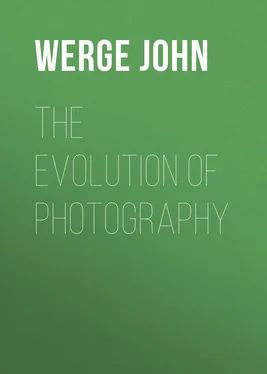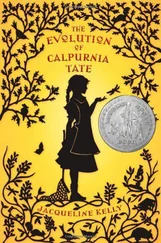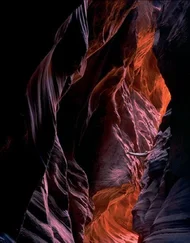John Werge - The Evolution of Photography
Здесь есть возможность читать онлайн «John Werge - The Evolution of Photography» — ознакомительный отрывок электронной книги совершенно бесплатно, а после прочтения отрывка купить полную версию. В некоторых случаях можно слушать аудио, скачать через торрент в формате fb2 и присутствует краткое содержание. Жанр: visual_arts, foreign_home, на английском языке. Описание произведения, (предисловие) а так же отзывы посетителей доступны на портале библиотеки ЛибКат.
- Название:The Evolution of Photography
- Автор:
- Жанр:
- Год:неизвестен
- ISBN:нет данных
- Рейтинг книги:5 / 5. Голосов: 1
-
Избранное:Добавить в избранное
- Отзывы:
-
Ваша оценка:
- 100
- 1
- 2
- 3
- 4
- 5
The Evolution of Photography: краткое содержание, описание и аннотация
Предлагаем к чтению аннотацию, описание, краткое содержание или предисловие (зависит от того, что написал сам автор книги «The Evolution of Photography»). Если вы не нашли необходимую информацию о книге — напишите в комментариях, мы постараемся отыскать её.
The Evolution of Photography — читать онлайн ознакомительный отрывок
Ниже представлен текст книги, разбитый по страницам. Система сохранения места последней прочитанной страницы, позволяет с удобством читать онлайн бесплатно книгу «The Evolution of Photography», без необходимости каждый раз заново искать на чём Вы остановились. Поставьте закладку, и сможете в любой момент перейти на страницу, на которой закончили чтение.
Интервал:
Закладка:
“Such is a short account of my contribution to this interesting branch of science, and, in the pleasure of the discovery, I have a sufficient reward.”
These lengthy extracts from the Rev. Mr. Reade’s published letter render further comment all but superfluous, but I cannot resist taking advantage of the opportunity here afforded of pointing out to all lovers of photography and natural justice that the progress of the discovery has advanced to a far greater extent by Mr. Reade’s reasoning and experiments than it was by Mr. Talbot’s ingenuity. The latter, as Mr. Reade observes, only “caught the ball” and threw it into the Patent Office, with some improvements in the manipulations. Mr. Reade generously ascribes all honour and glory to Mr. Talbot for his shrewdness in seizing what he had overlooked, viz., the development of the latent image; but there is a quiet current of rebuke running all through Mr. Reade’s letter about the justice of patenting a known sensitiser and a known accelerator, which he alone had combined and applied to the successful production of a negative on paper. Mr. Talbot’s patent process was nothing more, yet he endeavoured to secure a monopoly of what was in substance the discovery and invention of another. Mr. Talbot was either very precipitate, or ill-advised, to rush to the Patent Office with his modification, and even at this distant date it is much to be regretted that he did so, for his rash act has, unhappily for photography, proved a pernicious precedent. Mr. Reade gave his discoveries to the world freely, and the “pleasure of the discovery” was “a sufficient reward.” All honour to such discoverers. They, and they only, are the true lovers of science and art, who take up the torch where another laid it down, or lost it, and carry it forward another stage towards perfection, without sullying its brightness or dimming the flame with sordid motives.
The Rev. J. B. Reade lived to see the process he discovered and watched over in its embryo state, developed with wondrous rapidity into one of the most extensively applied arts of this marvellous age, and died, regretted and esteemed by all who knew him, December 12th, 1870. Photographers, your occupations are his monument, but let his name be a tablet on your hearts, and his unselfishness your emulation!
The year 1838 gave birth to another photographic discovery, little thought of and of small promise at the time, but out of which have flowed all the various modifications of solar and mechanical carbon printing. This was the discovery of Mr. Mungo Ponton, who first observed and announced the effects of the sun’s rays upon bichromate of potash. But that gentleman was unwise in his generation, and did not patent his discovery, so a whole host of patent locusts fell upon the field of research in after years, and quickly seized the manna he had left, to spread on their own bread. Mr. Mungo Ponton spread a solution of bichromate of potash upon paper, submitted it under a suitable object to the sun’s rays, and told all the world, without charge, that the light hardened the bichromate to the extent of its action, and that the unacted-upon portions could be dissolved away, leaving the object white upon a yellow or orange ground. Other experimenters played variations on Mr. Ponton’s bichromate scale, and amongst the performers were M. E. Becquerel, of France, and our own distinguished countryman, Mr. Robert Hunt.
During the years that elapsed between the death of M. Niépce and the period to which I have brought these records, little was heard or known of the researches of M. Daguerre, but he was not idle, nor had he abandoned his iodine ideas. He steadily pursued his subject, and worked with a continuity that gained him the unenviable reputation of a lunatic. His persistency created doubts of his sanity, but he toiled on solus , confident that he was not in pursuit of an impossibility, and sanguine of success. That success came, hastened by lucky chance, and early in January, 1839, M. Daguerre announced the interesting and important fact that the problem was solved. Pictures in the camera-obscura could be, not only seen, but caught and retained. M. Daguerre had laboured, sought, and found, and the bare announcement of his wonderful discovery electrified the world of science.
The electric telegraph could not then flash the fascinating intelligence from Paris to London, but the news travelled fast, nevertheless, and the unexpected report of M. Daguerre’s triumph hurried Mr. Talbot forward with a similar statement of success. Mr. Talbot declared his triumph on the 31st of January, 1839, and published in the following month the details of a process which was little, if any, in advance of that already known.
Daguerre delayed the publication of his process until a pension of six thousand francs per annum had been secured to himself, and four thousand francs per annum to M. Isidore Niépce for life, with a reversion of one-half to their widows. In the midst of political and social struggles France was proud of the glory of such a marvellous discovery, and liberally rewarded her fortunate sons of science with honourable distinction and substantial emolument. She was proud and generous to a chivalrous extent, for she pensioned her sons that she might have the “glory of endowing the world of science and of art with one of the most surprising discoveries” that had been made on her soil; and, because she considered that “the invention did not admit of being secured by patent;” but avarice and cupidity frustrated her noble and generous intentions in this country, and England alone was harassed with injunctions and prosecutions, while all the rest of the world participated in the pleasure and profits of the noble gift of France.
In July, 1839, M. Daguerre divulged his secret at the request and expense of the French Government, and the process which bore his name was found to be totally different, both in manipulation and effect, from any sun-pictures that had been obtained in England. The Daguerreotype was a latent image produced by light on an iodised silver plate, and developed, or made visible, by the fumes of mercury; but the resultant picture was one of the most shimmering and vapoury imaginable, wanting in solidity, colour, and firmness. In fact, photography as introduced by M. Daguerre was in every sense a wonderfully shadowy and all but invisible thing, and not many removes from the dark ages of its creation. The process was extremely delicate and difficult, slow and tedious to manipulate, and too insensitive to be applied to portraiture with any prospect of success, from fifteen to twenty minutes’ exposure in bright sunshine being necessary to obtain a picture. The mode of proceeding was as follows:—A copper plate with a coating of silver was carefully cleaned and polished on the silvered side, that was placed, silver side downwards, over a vessel containing iodine in crystals, until the silvered surface assumed a golden-yellow colour. The plate was then transferred to the camera-obscura, and submitted to the action of light. After the plate had received the requisite amount of exposure, it was placed over a box containing mercury, the fumes of which, on the application of a gentle heat, developed the latent image. The picture was then washed in salt and water, or a solution of hyposulphite of soda, to remove the iodide of silver, washed in clean water afterwards, and dried, and the Daguerreotype was finished according to Daguerre’s first published process.
The development of the latent image by mercury subliming was the most marvellous and unlooked-for part of the process, and it was for that all-important thing that Daguerre was entirely indebted to chance. Having put one of his apparently useless iodized and exposed silver plates into a cupboard containing a pot of mercury, Daguerre was greatly surprised, on visiting the cupboard some time afterwards, to find the blank looking plate converted into a visible picture. Other plates were iodized and exposed and placed in the cupboard, and the same mysterious process of development was repeated, and it was not until this thing and the other thing had been removed and replaced over and over again, that Daguerre became aware that quicksilver, an article that had been used for making mirrors and reflecting images for years, was the developer of the invisible image. It was indeed a most marvellous and unexpected result. Daguerre had devoted years of labour and made numberless experiments to obtain a transcript of nature drawn by her own hand, but all his studied efforts and weary hours of labour had only resulted in repeated failures and disappointments, and it appeared that Nature herself had grown weary of his bungling, and resolved to show him the way.
Читать дальшеИнтервал:
Закладка:
Похожие книги на «The Evolution of Photography»
Представляем Вашему вниманию похожие книги на «The Evolution of Photography» списком для выбора. Мы отобрали схожую по названию и смыслу литературу в надежде предоставить читателям больше вариантов отыскать новые, интересные, ещё непрочитанные произведения.
Обсуждение, отзывы о книге «The Evolution of Photography» и просто собственные мнения читателей. Оставьте ваши комментарии, напишите, что Вы думаете о произведении, его смысле или главных героях. Укажите что конкретно понравилось, а что нет, и почему Вы так считаете.












